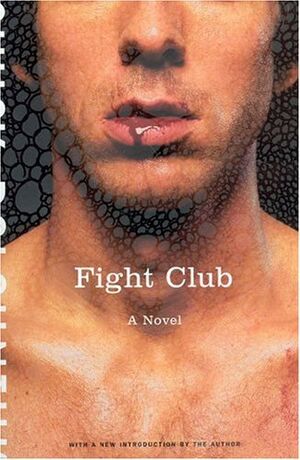Fight Club: Difference between revisions
mNo edit summary |
m (→Works Cited) |
||
| Line 125: | Line 125: | ||
[All works cited should be in correct MLA format and include in-text parenthetical citations.] | [All works cited should be in correct MLA format and include in-text parenthetical citations.] | ||
Palahniuk, Chuck.''Fight Club''.NewYork:Henry Holt and Company, 1966. | *Palahniuk, Chuck.''Fight Club''.NewYork:Henry Holt and Company, 1966. | ||
*Freud, Sigmund.''Beyond the pleasure principle''.NewYork:Liveright Publishing Corporation, 1961. | |||
[[Category:Literature]] [[Category:Study Guide]] | [[Category:Literature]] [[Category:Study Guide]] | ||
Revision as of 11:55, 4 November 2006
A 1996 novel by Chuck Palahniuk, and a 1999 film by David Fincher.
Study Guide
Characters
The Narrator
The protagonist of the story who suffers from insomnia and has a split personality. Because of his insomnia, he starts attending support groups to see what real suffering is like. After a while of attending them, he meets Tyler Durden and forms Fight Club. This begins to be his new support group. We never find out his name in the story. We only know his other personality, Tyler.
Tyler Durden
He is the narrators devious side of his personality. He is the one who technically made the way for the Fight Club when he said to the narrator "hit me as hard as you can." The narrator wanted to be more like Tyler even though the are the same person.
Marla Singer
The narrator meets her at the support groups he was attending. He beings to hate her for being a tourist. He could not let himself go when there was another faker there. She ends up being Tyler (and the narrator's) lover.
Big Bob
He is a man the narrator meets at the testicular cancer support groups. He develops brests from having to take more estrogen. The narrator makes friends with him and Bob joins a fight club. He ends up getting shot while doing something for Project Mayhem, and dies.
Major Themes
The Feminization of Men
Redefining or Rediscovering Masculinity
The Numbing Effects of Modern Life
The Oedipus Complex
The Oedipus Complex – Based from a greek legend * Read about itking of Thebes, the son of Laius and Jocasta, and the father by Jocasta of Eteocles, Polynices, Antigone, and Ismeme: as was prophesied at his birth, he unwittingly killed his father and married his mother and, in penance, blinded himself and went into exile.
The unresolved desire of a child for sexual gratification through the parent of the opposite sex, esp. the desire of a son for his mother. This involves, first, identification with and, later, hatred for the parent of the same sex, who is considered by the child as a rival.
1.A child's positive libidinal feelings toward the parent of the opposite sex and hostile or jealous feelings toward the parent of the same sex that develop usually between the ages of three and six and that may be a source of adult personality disorder when unresolved used especially of the male child.
2. The unresolved oedipal feelings persisting into adult life.
“The child’s sexual researches, on which limits are imposed by his physical development, lead to no satisfactory conclusion; hence such later complaints as ‘I can’t accomplish anything’.” “The tie of affection, which binds the child as a rule to the parent of the opposite sex, succumbs to disappointment, to a vain expectation of satisfaction or to jealousy over the birth of a new baby-unmistakable proof or the infidelity of the object of the child’s affections.” “His own attempt to make a bay himself, carried out with tragic seriousness, fails shamefully.” “The lessening amount of affection he receives, the increasing demands of education, hard words and an occasional punishment-these show him at last the full extent to which he has been scorned.” “These are a few typical and constantly recurring instances of the ways in which the love characteristic of the age of childhood is brought to a conclusion.”(Freud 15)
[More to be added.]
Major Symbols
The Rules of Fight Club
1st RULE: You do not talk about FIGHT CLUB.
2nd RULE: You DO NOT talk about FIGHT CLUB.
3rd RULE: If someone says "stop" or goes limp, taps out the fight is over.
4th RULE: Only two guys to a fight.
5th RULE: One fight at a time.
6th RULE: No shirts, no shoes.
7th RULE: Fights will go on as long as they have to.
8th RULE: If this is your first night at FIGHT CLUB, you HAVE to fight.
Fight Club in Contemporary Culture
[This section should include links to cultural items that Fight Club has influenced.]
Influences
F. Scott Fitzgerald's The Great Gatsby
[More to be added.]
Fight Club the film
Additional Resources
[This section should include items of interest that have not been cited but that might be of further use for researchers.]
Works Cited
[All works cited should be in correct MLA format and include in-text parenthetical citations.]
- Palahniuk, Chuck.Fight Club.NewYork:Henry Holt and Company, 1966.
- Freud, Sigmund.Beyond the pleasure principle.NewYork:Liveright Publishing Corporation, 1961.

